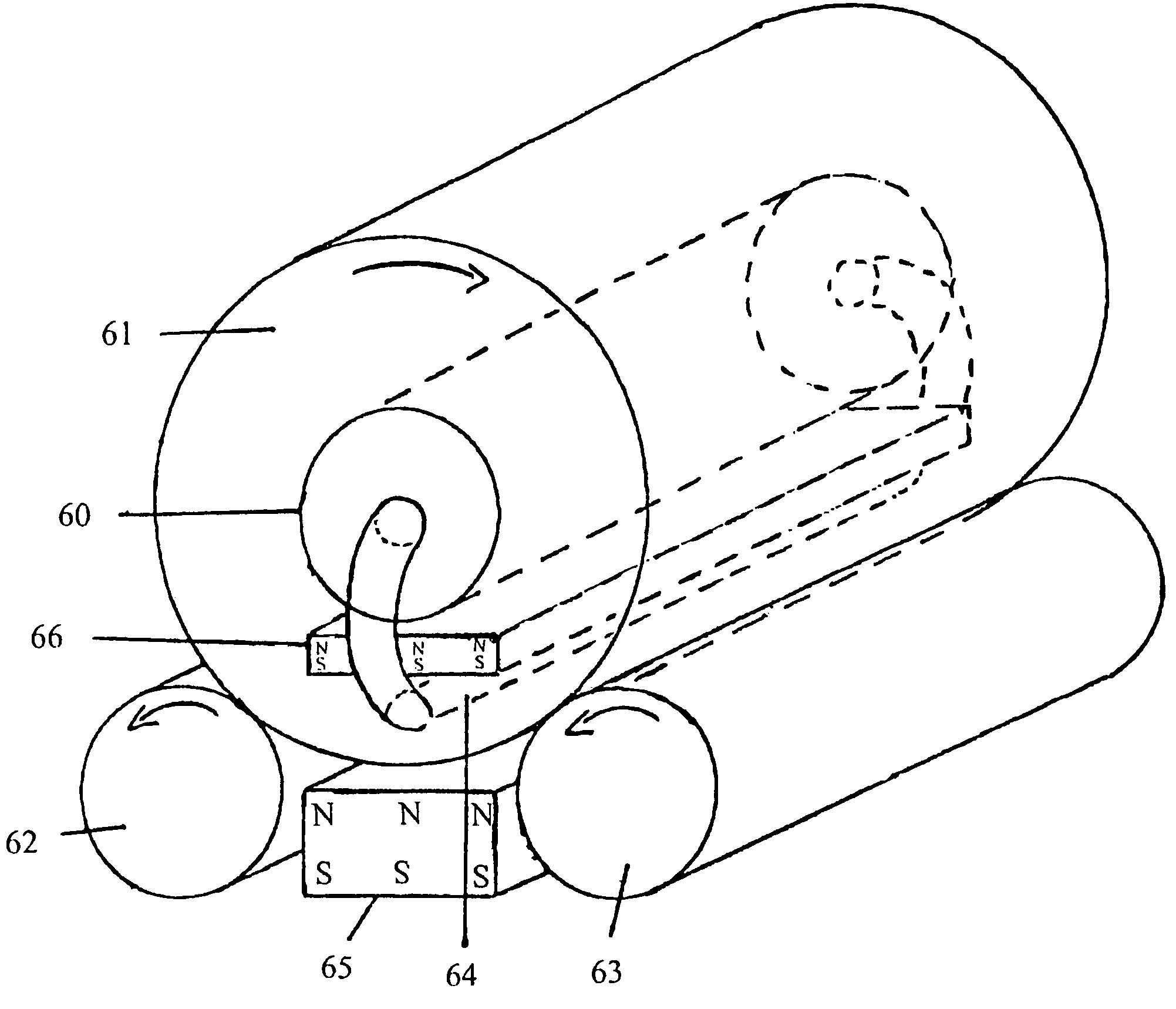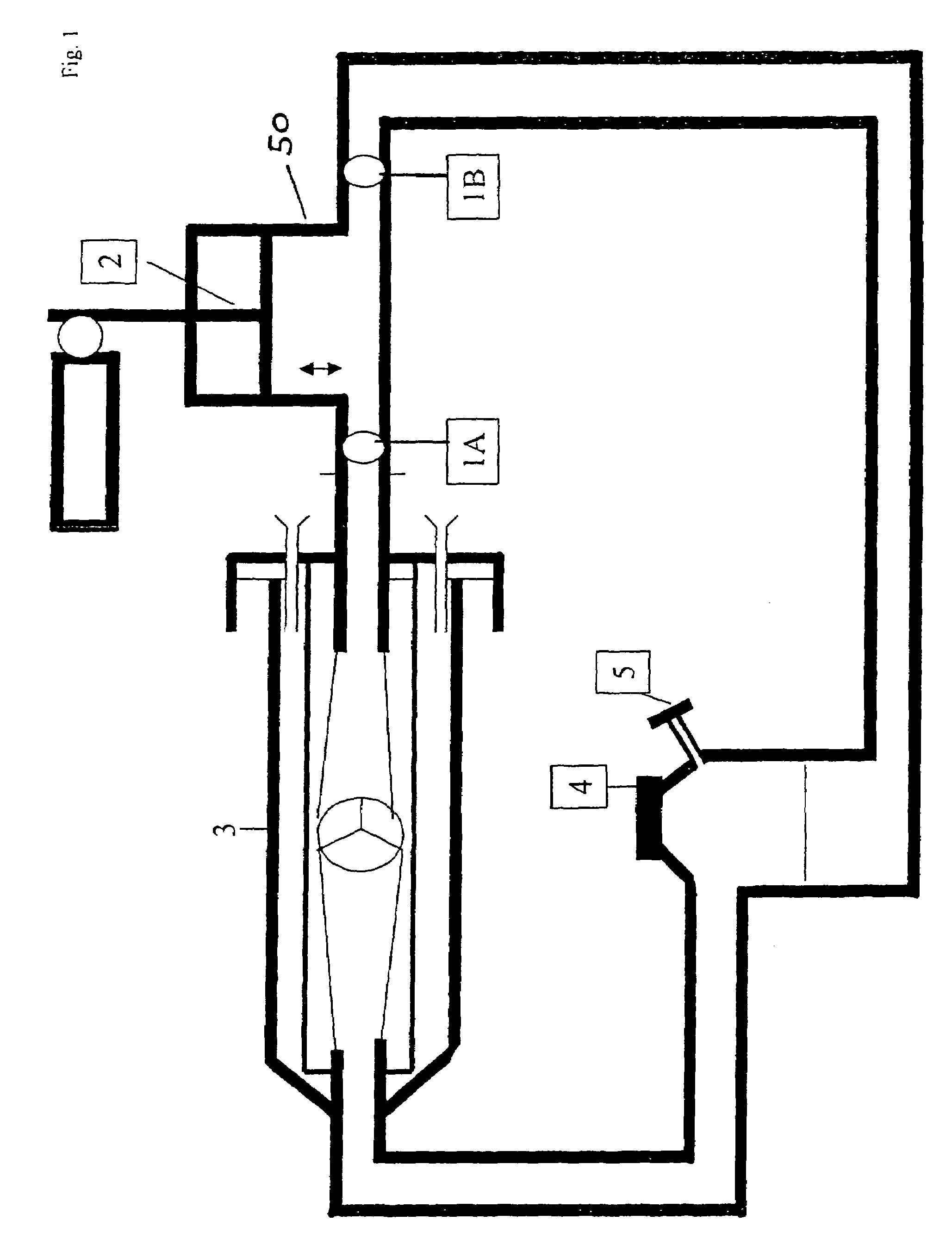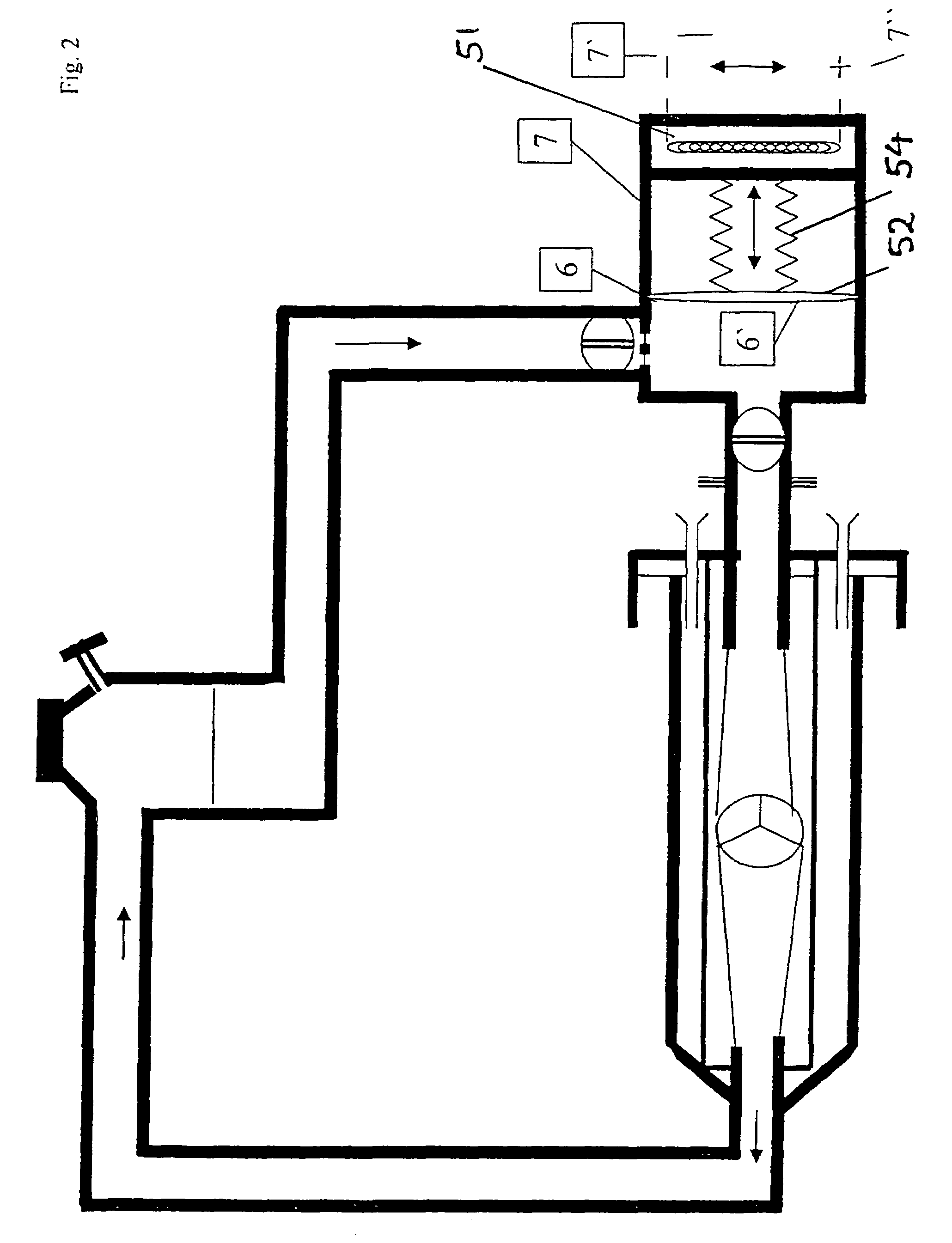Device for pressurized perfusion especially for culturing and/or treating cells
a technology of pressurized perfusion and cell, applied in the field of bioreactors, can solve the problems of high design requirements, membrane breakage, and movement patterns that impart high mechanical stress to the membrane structure, and achieve the effect of low energy consumption and high degree of parallelization
- Summary
- Abstract
- Description
- Claims
- Application Information
AI Technical Summary
Benefits of technology
Problems solved by technology
Method used
Image
Examples
Embodiment Construction
[0030]FIG. 1 shows a modular component, which is coupled to a bioreactor 3. The module is composed of two valves 1A and 1B as well as of a piston 2 and is adaptable to the bioreactor via a sterile coupling and directly, as shown in FIG. 1, integratable in the influence area. Both valves 1A and 1B open in the same direction, in FIG. 1 to the left, towards the bioreactor. This generates a volumetric flow which is introduced into the reactor area at a high amplitude and pressure curve. So it is possible to achieve the opening and closing of an implant placed in the bioreactor, e.g. an allogenic heart valve. Two-leaflet valves opening or closing passively from flow changes are especially suited for the valves 1A and 1B. Other non-return valves, such as balls in a conically tapered tube section, are also possible.
[0031]FIG. 1 shows the perfusion module in a sagitally directed form. The advantage is that the backward movement of the piston 2 across the opening of valve 1A enhancedly cause...
PUM
| Property | Measurement | Unit |
|---|---|---|
| volume | aaaaa | aaaaa |
| volume | aaaaa | aaaaa |
| weight | aaaaa | aaaaa |
Abstract
Description
Claims
Application Information
 Login to View More
Login to View More - R&D
- Intellectual Property
- Life Sciences
- Materials
- Tech Scout
- Unparalleled Data Quality
- Higher Quality Content
- 60% Fewer Hallucinations
Browse by: Latest US Patents, China's latest patents, Technical Efficacy Thesaurus, Application Domain, Technology Topic, Popular Technical Reports.
© 2025 PatSnap. All rights reserved.Legal|Privacy policy|Modern Slavery Act Transparency Statement|Sitemap|About US| Contact US: help@patsnap.com



